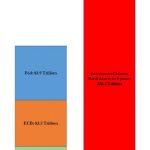The U.S. hotel industry cycle appears to be moderating to historical norms, coming off years of accelerated growth that started in 2010 following the Great Recession. This moderating trend is expected to continue this year as well, with many industry players projected to experience muted growth.
Solid lodging fundamentals, a steady rise in business and leisure travel on the back of an improving economy and positive employment numbers are favorable developments for the industry. Strong investor appetite thanks to higher transaction volumes should also help.
Prospects of lower taxes, reduced regulations and updated trade policies should contribute to improving economic conditions, surging capital markets and rising business and consumer confidence. This is likely to support growth in corporate transient demand, which was bumpy all through 2016.
On the flip side, geopolitical uncertainties are expected to continue weighing on the performance of the U.S. lodging industry. Also, rising costs, the strengthening U.S. dollar and its impact on inbound, international travel along with pockets of geopolitical instability and economic slowdown,are all expected to keep the industry’s growth in check.
We thus expect the lodging cycle to more or less align with the broader business cycle, going forward. This is reflected in the group’s recent stock price performance as well, which has been roughly in-line with the S&P 500 index over the past year.
What Do the Numbers Say?
Statistics underscore the expectation of a more or less flat performance by the hotel industry. A recent report by PricewaterhouseCoopers (“PwC”) shows that new supply is likely to rise 1.9% in 2017, outpacing demand growth of 1.6%. This is likely to affect occupancy rates, which are expected to fall marginally by 0.3% in 2017.
Meanwhile, though average daily rate’s (ADR) projected rise of 2.6% in 2017 will be lower than 2016’s rise, it will still be impressive. As a result, revenue per available room (RevPAR) is expected to increase 2.3%. This will be however lower than the average RevPAR growth recorded in the past few years.
Moreover, the Baird/STR Hotel Stock Index, which comprises 20 of the largest market capitalization hotel companies publicly traded on a U.S. exchange and attempts to characterize the performance of hotel stocks, rose 0.7% in Feb 2017.














Leave A Comment